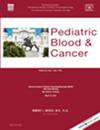Sustainability of a Cash Transfer Program in Malawi: A CANCaRe Africa “Zero Abandonment” Pilot
Abstract
Background
Sustainability—the continued delivery of an intervention's intended benefits after external donor support ends—is essential to ensure long-term impact and success. In 2019, a cash transfer program in Blantyre, Malawi, provided full transport reimbursement (mean ∼200 Euros/family), counseling, and patient tracking for caregivers of children with common and curable cancers. This reduced treatment abandonment from 19% to 7% (p < 0.001). We evaluated the program's sustainability over a 4-year period post-implementation.
Methods
The intervention was implemented from June 2019 to June 2020. We conducted a mixed-methods study to assess sustainment and sustainability. We evaluated the continuation of cash transfers and treatment abandonment rates among children (<16 years) newly diagnosed with common and curable cancers from 2022 to 2024. Exploratory stakeholder interviews identified perceived facilitators and barriers to sustainability.
Results
The program continued beyond 2020 with modifications—transport reimbursement was limited to the home district. A new donor assumed funding. Reduced abandonment rates were sustained: 9% (10/110) in 2022, 10% (13/127) in 2023, and 3% (2/70) in 2024 (with 40% still on treatment) (p = 0.28). Reported facilitators of sustainability included high acceptability, local ownership, demonstrated effectiveness, and availability of alternative donor support. Barriers included resource constraints, competing health priorities, and concerns about misuse of funds.
Conclusion
Four years after initial funding ended, the cash transfer intervention remained active with sustained reductions in treatment abandonment. These findings highlight the potential for sustained impact of financial support programs in low-resource settings. Further research is needed to identify the key determinants of sustainability, informing future scale-up efforts.


 求助内容:
求助内容: 应助结果提醒方式:
应助结果提醒方式:


